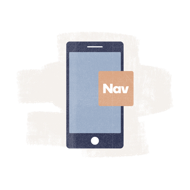Credit scores are often seen as the number one obstacle preventing small businesses from getting financing. But disorganized financials may be equally to blame. In today’s challenging economic environment in particular, lenders want to make sure your business is viable and will be able to repay the debt. Organized and up to date finances are essential if you want to increase your chances of getting approved.
Here are 5 simple ways to organize your business finances.
1. Create an Easy Filing System
CTA title
Add CTA text Here
“We think ignorance is bliss, but really is it filled with headaches and fear,” says Belinda Rosenblum, CPA, money strategist for business owners, and founder of OwnYourMoney.com. “Avoiding your paperwork and bills—or even a huge ‘to file pile’ is a costly recipe for disaster,” she says. “Not opening bills often causes missed deadlines or even late fees. Opening them but then letting them pile up without filing anything can cause you to feel disorganized and out of control.”
Rosenblum suggests you schedule a short block of time each week—“for example, on a Money Monday or Finances Friday.” Then “set the timer on your phone (start with 30 minutes) and focus on getting through a certain stack of paperwork.” For a simple filing system she recommends file folders for each month of the year. “Then file the paperwork based on the invoice dates for consistency. You’ll need a few other folders for items such as taxes, charitable contributions, and health insurance paperwork,” she adds.


Check out Business Boost
Get your full business credit reports & scores, PLUS Nav reports your account payments to the business bureaus as a tradeline.
2. Stop Mixing Personal and Business Finances
Post archive CTA for article
Don’t forget to check “Is for CTA in article”
If you don’t have a business bank account, don’t put this task off any longer. (If you’re worried about the cost of a separate account, you can get a free business checking account.) Make sure to use your business account only to pay business expenses. If you need funds to pay personal expenses, pay yourself via payroll and/or owner’s draw then use your personal funds to pay personal expenses.
While you are at it, consider using a dedicated credit card for business expenses. A small business credit card can be an excellent choice. Some business credit cards don’t report to personal credit unless you default. And most offer attractive rewards.
“Even if you do not have a business credit card, designate one of your personal cards for business expenses,” advises Sandy Smith founder, Elevate Influencer Conference. “This will make it easier to track and manage those costs. If that credit card also rewards you with mileage, cash back, or any other gift for using the card, this is an added perk that you can use for yourself as well.”
Commingling personal and business funds in your business account can jeopardize the legal protection your business structure offers. Tax time is more complicated when you don’t use separate accounts. And using personal accounts for your business can definitely make it more difficult to get financing as many lenders want to verify business revenues.
3. Plan for Expenses
You need to make sure you set aside funds to pay annual bills as well. If you don’t plan for those expenses, you may run out of money. Sylvia Inks, Business & Financial Coach at SMI Financial Coaching, LLC and author of Small Business Finance Book for the Busy Entrepreneur suggests you calculate the total financial obligations for annual bills and divide by twelve. “Then, set up automatic savings to transfer this average monthly amount from your operating expense bank account to your long-term savings bank account,” she recommends. “As yearly bills come due, you’ll have the cash ready to pay them.”
4. Automate It
Set up autopay for bills so you don’t forget to pay them. You’ll save money on late fees and interest charges. As an added bonus, this strategy can help you build and protect your business credit since business credit reports can include payments that are just a day late.
Consider using your credit card to make those payments and you can earn rewards. Just make it a point to pay on time to avoid interest charges.

Get cash flow insights instantly
Analyze your business cash flow with Nav’s mobile app.
5. Tailor Your Financial Reports
Financial reports can also play a crucial role in getting approved for financing. Traditional lenders may want to see profit and loss statements, balances sheets or other financial statements for example. Others may analyze business revenues.
But don’t create them just for lenders— use them to gain valuable insights into your own business finances. Consider creating your own “custom report” in your bookkeeping system, suggests Rosenblum. “You can choose preferences once — like not showing the pennies or comparing to past periods — and then simply choose that same report to run every month,” she explains. “Each month, instead of wondering where all the money went, you will be more likely to actually run the report and spend your time analyzing the numbers and making conscious money making moves.”
This article was originally written on July 7, 2020 and updated on October 10, 2023.
Rate This Article
This article currently has 2656 ratings with an average of 5 stars.



Have at it! We'd love to hear from you and encourage a lively discussion among our users. Please help us keep our site clean and protect yourself. Refrain from posting overtly promotional content, and avoid disclosing personal information such as bank account or phone numbers.
Reviews Disclosure: The responses below are not provided or commissioned by the credit card, financing and service companies that appear on this site. Responses have not been reviewed, approved or otherwise endorsed by the credit card, financing and service companies and it is not their responsibility to ensure all posts and/or questions are answered.